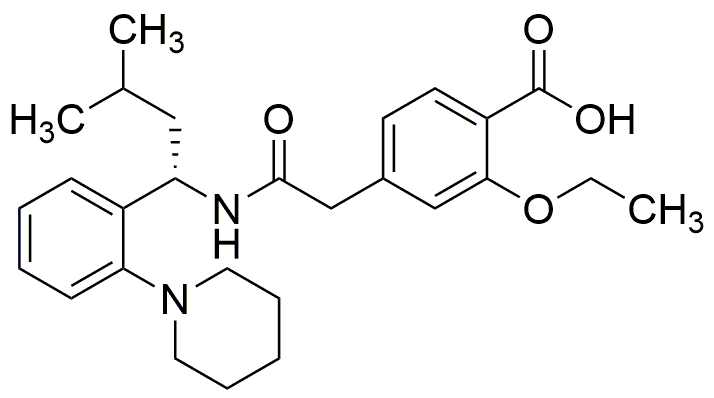Repaglinide is widely utilized in research focused on:
- Diabetes Management: Primarily used as an oral medication to control blood sugar levels in patients with type 2 diabetes, offering a rapid onset of action that helps manage post-meal glucose spikes effectively.
- Pharmaceutical Development: Researchers explore its pharmacokinetics and pharmacodynamics to improve formulations and develop combination therapies, enhancing treatment options for diabetes.
- Clinical Trials: Frequently involved in clinical studies assessing the efficacy and safety of new diabetes treatments, providing valuable data for regulatory approvals.
- Comparative Effectiveness Research: Used in studies comparing the effectiveness of various diabetes medications, helping healthcare providers make informed treatment decisions.
- Patient Adherence Studies: Investigated in research aimed at understanding patient adherence to diabetes therapies, as its dosing flexibility can improve compliance among patients.
General Information
Properties
Safety and Regulations
Applications
Repaglinide is widely utilized in research focused on:
- Diabetes Management: Primarily used as an oral medication to control blood sugar levels in patients with type 2 diabetes, offering a rapid onset of action that helps manage post-meal glucose spikes effectively.
- Pharmaceutical Development: Researchers explore its pharmacokinetics and pharmacodynamics to improve formulations and develop combination therapies, enhancing treatment options for diabetes.
- Clinical Trials: Frequently involved in clinical studies assessing the efficacy and safety of new diabetes treatments, providing valuable data for regulatory approvals.
- Comparative Effectiveness Research: Used in studies comparing the effectiveness of various diabetes medications, helping healthcare providers make informed treatment decisions.
- Patient Adherence Studies: Investigated in research aimed at understanding patient adherence to diabetes therapies, as its dosing flexibility can improve compliance among patients.
Documents
Safety Data Sheets (SDS)
The SDS provides comprehensive safety information on handling, storage, and disposal of the product.
Product Specification (PS)
The PS provides a comprehensive breakdown of the product’s properties, including chemical composition, physical state, purity, and storage requirements. It also details acceptable quality ranges and the product's intended applications.
Certificates of Analysis (COA)
Search for Certificates of Analysis (COA) by entering the products Lot Number. Lot and Batch Numbers can be found on a product’s label following the words ‘Lot’ or ‘Batch’.
*Catalog Number
*Lot Number
Certificates Of Origin (COO)
This COO confirms the country where the product was manufactured, and also details the materials and components used in it and whether it is derived from natural, synthetic, or other specific sources. This certificate may be required for customs, trade, and regulatory compliance.
*Catalog Number
*Lot Number
Safety Data Sheets (SDS)
The SDS provides comprehensive safety information on handling, storage, and disposal of the product.
DownloadProduct Specification (PS)
The PS provides a comprehensive breakdown of the product’s properties, including chemical composition, physical state, purity, and storage requirements. It also details acceptable quality ranges and the product's intended applications.
DownloadCertificates of Analysis (COA)
Search for Certificates of Analysis (COA) by entering the products Lot Number. Lot and Batch Numbers can be found on a product’s label following the words ‘Lot’ or ‘Batch’.
*Catalog Number
*Lot Number
Certificates Of Origin (COO)
This COO confirms the country where the product was manufactured, and also details the materials and components used in it and whether it is derived from natural, synthetic, or other specific sources. This certificate may be required for customs, trade, and regulatory compliance.


